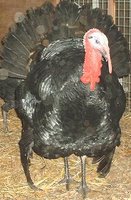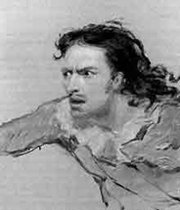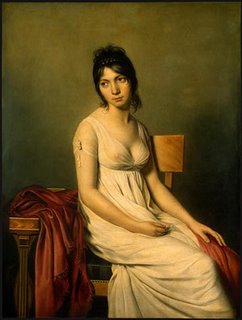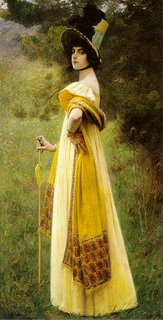All right, first of all, the answers to yesterday’s quiz! They are:
1) A bag
2) A brougham (this was the one I got wrong–I thought they were ALL Regency carriages, oops)
3) Clematis
4) A library that loaned books to members who paid a subscription fee
5) To fill the page one way and then write in the spaces the other way
6) Though I was tempted to go with the decayed fruit answer, it was of course: Add decorative items to it
7) A coat
8) Stays
9) Members of Parliament
10) Poker
So–how did everyone do?
And I have been giving a lot of thought to Christmas matters lately. I took Megan’s advice and piled many of my favorite Christmas-set books in a basket, where they look all festive and beckoning! There are several anthologies there, as well as Kate Huntington’s “Mistletoe Mayhem”, Regina Scott’s “Twelve Days of Christmas”, Mary Balogh’s “A Christmas Bride”–and many others, which I’m sure I’ll talk about more as the season goes on.
When I was writing my own Christmas novellas (“A Partridge in a Pear Tree” in “A Regency Christmas”, and “Upon a Midnight Clear” in “Regency Christmas Magic”, a story that features my own personal favorite couple of my own creating, Antoinette and Mark) I did a lot of research on Christmas in the period. Of course, many of the traditions we consider to be, well, traditional come from the Victorian period. Trees, stockings, Santa Claus, though not Barnes and Noble gift cards (my own favorite family tradition!). In the Regency, Christmas was a much lower-key time, though it had its share of fun. Greenery was used for decorations, rosemary, bay, holly, laurel, mistletoe, fashioned into swags and wreaths. Here is a bit of a poem from 1825:
“Bring me a garland of holly,
Rosemary, ivy, and bays”
Gifts were probably exchanged, though not the great mountains we expect now (no Barbie dream homes and Tickle Me Elmos), maybe a few songs sung, though many of the older carols were heard more as hymns in church. There might be roving bands singing “wassail” songs from door to door, looking for food, coins, and (what else?) wassail. In London, there were often Christmas pantomimes, and it seems Astley’s Amphitheater had a Christmas show. On Twelfth Night, there were often masking parties, and cakes where whoever got the bean would then be “king of the bean” for the party.
Jane Austen, as far as I can find, only mentioned the holiday once in her surviving letters, wishing her sister Cassandra a “merry Christmas”, and saying she was invited to dine at a friends’ house (she was not going to go due to bad weather, but then it seems the weather cleared and she went after all). There are some hints in the books–“Persuasion” features a scene of Christmas at the Musgrave house, where the girls are cutting out silk and gold paper for ornaments, the small boys run riot (too much candy?), and the fire roars. Lady Russell remarks, “I hope I shall remember in future not to call at Uppercross in the Christmas holiday.” And in “Emma”, they attend a Christmas party at the Westons’. Mr. Elton says, “At Christmas everybody invites their friends about them, and people think little of even the worst weather.”
I tried to stay true to this in my own stories, while still being festive and holiday-ish (it’s a holiday anthology, after all!). My characters play games (“Partridge” centers around a sort of scavenger hunt based on the song), attend parties, and drink wassail, while finding love, of course. Which I hope you’ll have in abundance this holiday season.

 No, the English don’t celebrate Thanksgiving, but they do have their own breeds of turkeys. At left, a handsome Norfolk black, and on the right, a Cambridge bronze, tho I’m afraid to me they just look like turkeys. Did you know male turkeys are called stags?
No, the English don’t celebrate Thanksgiving, but they do have their own breeds of turkeys. At left, a handsome Norfolk black, and on the right, a Cambridge bronze, tho I’m afraid to me they just look like turkeys. Did you know male turkeys are called stags?










